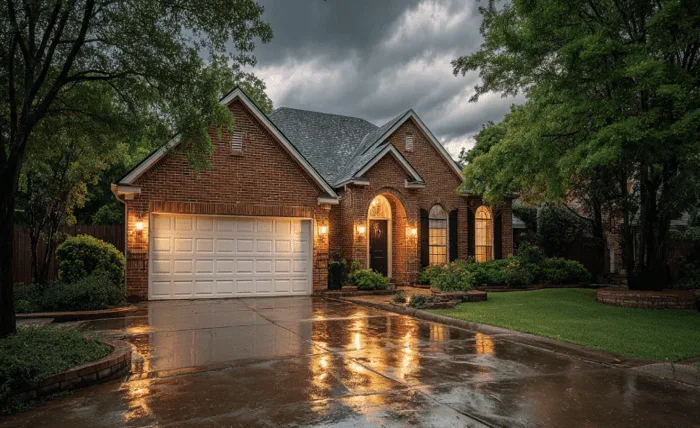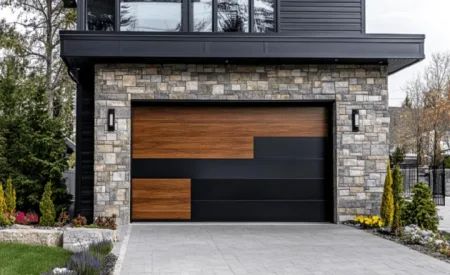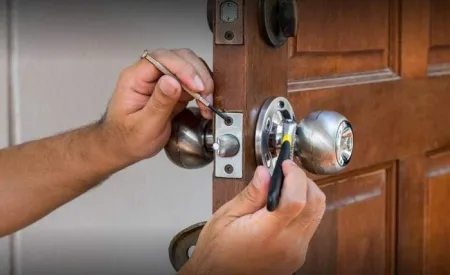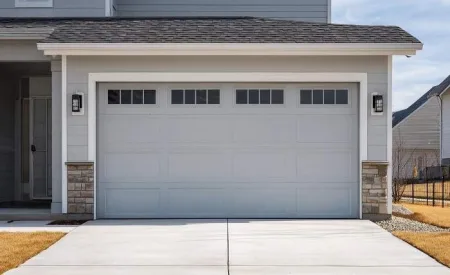SilentBio focuses on choices that compound into better days, better finances, and better routines. A new or properly installed garage door fits that formula. It removes friction from your morning, strengthens home security, and trims energy waste that shows up in utility bills. In a community like St Anthony, where winter ice, spring slush, and humid summers test every seal and hinge, installation quality determines whether your door feels invisible in the best possible way or nags at you with every noisy cycle.
This article looks at garage door installation as a smart, practical move. We will cover how a modern door affects comfort and costs, why precise setup matters more than glossy brochure specs, and what to expect from a local specialist that treats craftsmanship like a habit. The goal is simple. Fewer headaches. More reliability. Stronger long term value.
Installation Quality Beats Catalog Promises
R values, wind ratings, and paint warranties matter, but they only deliver full benefit when the door is measured, leveled, and balanced with care. If tracks are a few millimeters out of plumb, rollers bind and the opener strains. If spring torque is not set correctly, the door drifts at midpoint or slams the bottom seal unevenly. That is why professional installation begins with framing checks, header measurements, and trueing the opening before a single panel is hung.
An attentive installer shims brackets to remove side pull, torques fasteners to spec, and runs multiple open and close cycles while fine tuning travel limits. The difference shows up immediately. Smooth lift. Quiet travel. Even compression at the threshold. Long term, that precision protects motors, springs, and hinges from premature wear.
Comfort and Energy Savings You Can Feel
Attached garages often share walls with laundry rooms, family spaces, or bedrooms. A leaky, uninsulated door acts like a giant air exchange. In winter, cold air steals heat from adjacent rooms and forces the furnace to work harder. In summer, warm humid air migrates indoors, nudging the air conditioner into longer cycles. Insulated steel or composite doors fight those losses by pairing dense foam cores with perimeter weather seals that stay flexible in low temperatures.
The benefits are tangible. Floors near the garage feel warmer in January. Paints, batteries, and tools stored in the garage last longer because temperature and humidity swings are smaller. Engines start easier on frigid mornings. And monthly energy statements settle down because your home is not constantly battling drafts.
Safety and Security are Part of the Value
A correctly installed door is safer for families and harder for intruders. Photo eyes must be aligned and free of glare issues so the door stops and reverses the instant an obstruction appears. Close force settings have to be calibrated so the motor senses resistance quickly rather than grinding through it. For security, modern openers use rolling codes that change with each press, making captured signals useless. A tight bottom seal and square panels reduce pry points. A good installer tests all of this with you, then shows you how to do a simple monthly check.
Materials and Style that Suit St Anthony Homes
Material choice should match priorities. Steel with polyurethane insulation maximizes durability and thermal performance with minimal upkeep. Aluminum with full view glass brightens workspaces and offers a modern look. Composite overlays deliver classic carriage details while avoiding the sanding and staining cycle of real wood. Hardware and window lites create the finishing touch. The best installations blend function and form so the door looks right from the street and works right every day.
Smart Features that Become Second Nature
Wi Fi enabled openers add practical convenience. You can confirm closed status from a phone, set an auto close timer, or receive alerts if the door is left open past a certain hour. Battery backup modules keep access smooth during outages. Motion activated LEDs flood the garage with light the moment you step in, useful when carrying groceries or strollers. A careful installer pairs the opener to your devices, customizes alerts, and verifies everything before the final cleanup.
What Excellent Service Looks Like on Install Day
Expect a tidy, methodical process. The crew protects floors, removes the old door in sections, and inspects framing for rot or compression. They measure opening squareness, confirm headroom for springs, and select the right track radius for your layout. After panels go up, they balance the door so it stays put at midpoint, set travel limits so the bottom seal compresses without crushing, and confirm quiet travel across the full cycle.
A walkthrough should follow. How to test the auto reverse using a scrap piece of wood. How to gently clean sensor lenses. Which sounds in deep winter are normal and which indicate a need for service. That ten minute lesson prevents most surprises.
When Installation Beats Another Repair
If your door shows major dents, delamination, cracked stiles, or persistent gaps that no tune up can solve, replacement is a better use of cash. Doors older than fifteen years with loud chain drives and brittle seals rarely match the comfort or security of modern insulated systems. If a move is on the horizon, a fresh, quiet door and a smart opener improve listing photos and showing impressions, which can help offers arrive faster.
Clear Pricing and Documentation Build Trust
Good vendors earn repeat business by writing down the small but important details. You should leave with a document listing spring type and size, insulation level, track type, opener model, travel limit settings, and warranties. Photographs of the finished install and the balanced midpoint test add confidence. Communication matters too. If weather shifts the schedule, you should know in advance. If a minor adjustment is needed in week one, a responsive callback finishes the job right.
Where to Begin
Start with a simple audit. Stand inside the garage at midday and look for daylight at the corners or along the bottom. Run the door and listen for grinding, squeaks, or shuddering. Photograph the bottom seal and side seals. Note any opener hesitations or sensor misreads when sunlight hits the doorway. With that list, you can align features and budget with your goals for comfort, quiet operation, and security.
Later in the process, many homeowners choose to schedule garage door installation St Anthony with a local team that treats alignment, balance, and sensor calibration as nonnegotiable steps instead of afterthoughts.
Action Checklist for St Anthony Households
- Define your goal. Quieter mornings, better comfort in adjacent rooms, or a cleaner look from the street.
- Ask for written scope. Insulation value, spring type, opener model, seal brand, and warranty terms.
- Plan for power outages. Consider battery backup now rather than after the first storm.
- Opt for motion lighting. It costs little and pays back every evening.
- Schedule a one year follow up. A quick retune keeps the system whisper quiet and efficient.
A good installation feels almost invisible. It simply works. The door lifts without drama, closes tight, and protects your time, your gear, and your budget. That is the kind of everyday win SilentBio readers appreciate.



